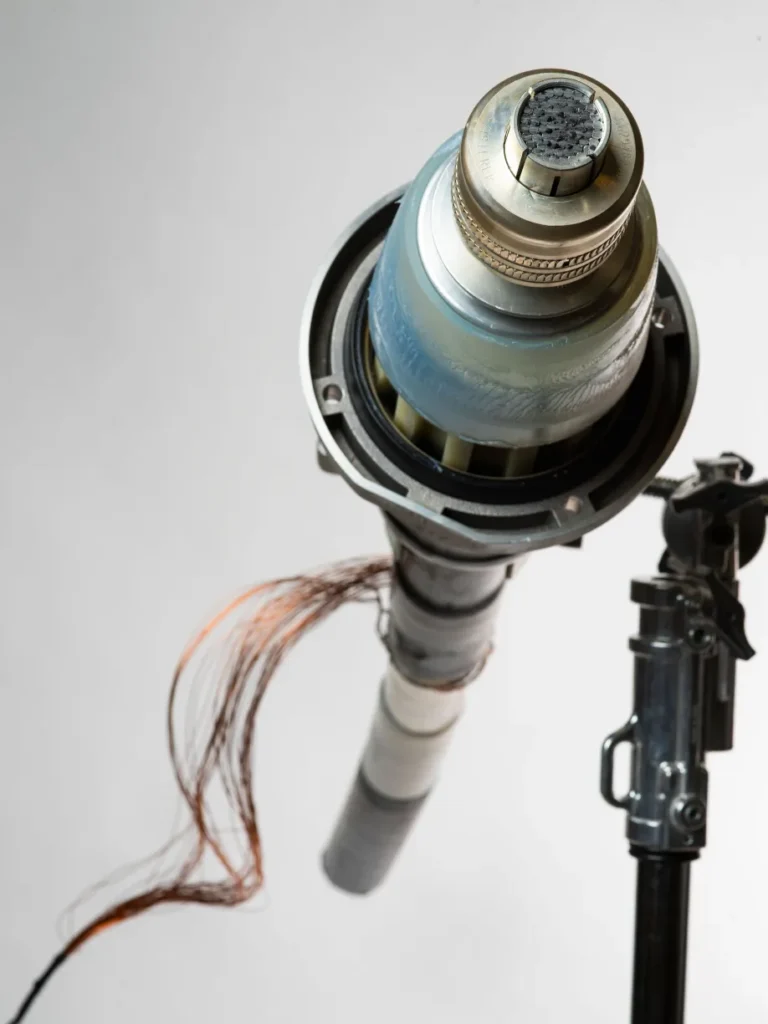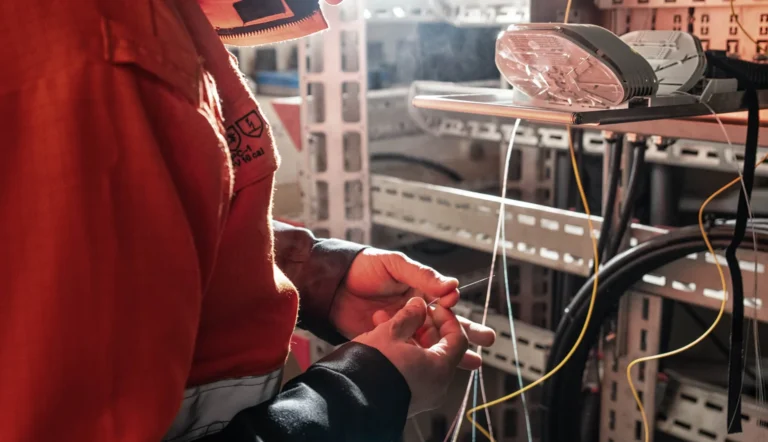Introduction
The world is shifting focus toward renewable energy to combat climate change. Among the most promising solutions is wind energy, specifically the development of wind farms. These farms, both onshore and offshore, generate clean, sustainable electricity by capturing the power of the wind. With advancements in offshore wind technology, including the use of modern wind turbines and offshore turbines, wind energy has become a key component in the global transition to renewable energy.
What is a Wind Farm?
A wind farm consists of several turbines that harness wind to produce electricity. These turbines are strategically placed to capture maximum energy from wind patterns. They can be built either onshore or offshore, with the latter being more efficient in areas where high wind speeds generate more power.
Wind farms play a significant role in renewable energy production. They generate electricity without releasing greenhouse gases, helping countries reduce their dependence on fossil fuels. As a result, they are crucial in global efforts to combat climate change, offering a clean alternative to traditional energy sources. Click here to read more about wind energy in the EU.
Why Renewable Energy is the Future
Renewable energy is a powerful tool in addressing climate change. Unlike fossil fuels, which are finite and produce harmful emissions, renewable sources like wind, solar, and hydro are clean and virtually inexhaustible. Transitioning to renewable energy significantly reduces carbon emissions and air pollution, while promoting energy independence. Among the available options, wind energy is one of the most efficient and scalable solutions.
Economic benefits are also driving the shift. As technology improves and production scales up, the cost of generating renewable energy continues to decrease. This not only makes it environmentally sound but also economically viable. Governments are offering incentives and subsidies to accelerate renewable energy adoption, ensuring that the future of energy is sustainable.
Offshore Wind: The Next Frontier in Renewable Energy
Offshore wind farms represent a major advancement in wind energy. Built in oceans or large bodies of water, these farms benefit from stronger and more consistent winds. As a result, offshore wind farms generate more electricity than their onshore counterparts. Many regions are turning to offshore wind to meet their energy demands, especially where land is scarce or densely populated.
Beyond energy production, offshore wind has other advantages. Offshore wind farms are located far from populated areas, minimizing concerns about noise or visual impact. Additionally, the stronger winds found at sea make these farms more efficient. Leading countries like the UK, Germany, and China are investing heavily in offshore wind, and we can expect continued growth in this area as the technology advances. Learn more about offshore wind energy in the Netherlands.
The Technology Behind Offshore Turbines
Offshore turbines are critical to offshore wind farms, converting wind into electricity. These turbines are larger and more powerful than onshore ones, taking advantage of the higher and more consistent winds at sea. Depending on water depth, they are either anchored to the seabed or mounted on floating platforms.
The size and design of offshore turbines are optimized to capture as much wind energy as possible. They have longer blades and taller towers, which maximize energy production. Built to endure harsh marine conditions, offshore turbines must resist strong winds, saltwater corrosion, and severe weather. Recent innovations, such as floating turbine technology, make offshore wind farms viable in deeper waters, expanding their potential for energy generation.
Wind Turbines and Their Role in Clean Energy
Wind turbines are key to producing clean energy. They work by converting the kinetic energy of wind into mechanical power, which a generator then transforms into electricity. Wind turbines typically consist of rotor blades, a shaft, and a generator. When wind hits the blades, they spin the shaft, which powers the generator to produce electricity.
Wind turbines come in various sizes. Small turbines can generate power for homes, while large turbines, especially offshore ones, can provide electricity to entire cities. These turbines generate energy without emitting pollutants, making them an essential part of sustainable energy infrastructure. As turbine technology continues to improve, we are seeing greater efficiency and lower costs, making wind energy an increasingly attractive option.
Global Leaders in Offshore Wind Farms
Several countries are leading the charge in offshore wind energy production. The United Kingdom, for example, has the world’s largest installed capacity of offshore wind farms. Projects like the Hornsea Wind Farm are setting records for scale and efficiency. The UK’s commitment to reducing carbon emissions has driven significant investment in offshore wind.
Germany is another key player, particularly in the North Sea and the Baltic Sea. Through its Energiewende policy, Germany is transitioning from nuclear and fossil fuels to renewable energy, with offshore wind playing a central role. Meanwhile, China, the world’s largest carbon emitter, is rapidly expanding its offshore wind capacity. This effort is critical to achieving its climate targets.
Challenges Facing Offshore Wind Farms
Offshore wind farms offer great benefits but also face challenges. Installing turbines in the ocean is technically and logistically complex. The turbines must be anchored securely to the seabed or placed on floating platforms, depending on the water’s depth. These installations require specialized equipment and crews, which drive up the cost.
Environmental concerns also arise. The construction and operation of offshore wind farms can affect marine ecosystems, potentially impacting wildlife and fisheries. Developers are working with environmental agencies to minimize these effects through careful planning and monitoring. Additionally, maintaining offshore turbines, especially in deep waters, is costly. Despite these challenges, offshore wind remains a valuable investment, offering high energy returns and reducing carbon emissions in the long term.
Innovations in Wind Turbine Technology
Wind turbine technology is evolving rapidly, with exciting innovations that improve efficiency, durability, and affordability. One major advancement is floating wind turbines. Traditional offshore turbines are anchored to the seabed, limiting their use to shallow waters. Floating turbines, however, can operate in deeper waters, unlocking vast new areas for offshore wind farms. This technology is particularly useful for countries like Japan and the United States, where coastal waters are deeper.
Additionally, turbine blades are becoming more efficient at capturing wind, even at lower speeds. New materials, such as lightweight composites, improve durability and help turbines withstand harsh ocean environments. Digital technologies are also enhancing turbine performance, with sensors and monitoring systems that track energy output and predict maintenance needs. These innovations are making wind energy more cost-competitive with traditional energy sources.
Economic Impact of Wind Farms and Offshore Wind Energy
The economic impact of wind farms, particularly offshore, is significant. Wind farm development creates jobs in manufacturing, construction, and maintenance. In regions with a strong offshore wind industry, such as Europe and parts of Asia, this sector drives economic growth. The wind energy industry also spurs innovation in other sectors, including shipbuilding and logistics.
From a long-term perspective, wind energy is proving to be cost-effective. As technology improves and economies of scale take effect, the cost of producing wind energy continues to fall. Offshore wind farms, though expensive to build, generate vast amounts of electricity over their lifespan, delivering high returns. By reducing dependence on fossil fuels, countries achieve greater energy security and price stability, boosting their economies.
The Future of Offshore Wind and Wind Turbines
The future of offshore wind energy looks bright. Global investment is expected to surge as countries work to meet their climate targets. Floating wind turbines will open up new possibilities by allowing wind farms to be built in deeper waters, increasing their geographic range. Advances in turbine efficiency mean we will see even more energy generated from each installation.
Governments and private investors are committing billions of dollars to offshore wind projects. The European Union, for example, plans to increase offshore wind capacity by 25 times by 2050. The United States aims to produce 30 gigawatts of offshore wind energy by 2030. These investments signal a future where offshore wind plays a leading role in meeting global energy demands. Additionally, recyclable turbine components are being developed, ensuring long-term sustainability. Click here for more information about offshore wind in the EU.
Conclusion
Wind farms, especially offshore, are driving the global shift to renewable energy. The technology behind wind turbines and offshore turbines is constantly evolving, making wind energy more efficient, affordable, and scalable. Offshore wind holds enormous potential as countries aim to reduce carbon emissions and diversify their energy sources. While challenges such as cost and environmental impact remain, the long-term benefits make wind energy an essential part of the solution to climate change.
As countries continue to invest in renewable energy, wind farms will remain a crucial part of this movement, ensuring a sustainable future for generations to come. Click here to watch a video.
FAQs
1. What is the difference between onshore and offshore wind farms?
Onshore wind farms are located on land, while offshore wind farms are in large bodies of water, like oceans. Offshore wind farms benefit from stronger, more consistent winds, but they are more expensive to build and maintain.
2. How do offshore wind turbines work?
Offshore wind turbines convert wind energy into electricity using large rotor blades that capture wind power. The blades spin a generator, transforming the wind’s kinetic energy into electrical energy.
3. What are the environmental benefits of wind energy?
Wind energy is a clean and renewable energy source. It produces no greenhouse gas emissions during operation, helping reduce dependence on fossil fuels and mitigating climate change.
4. What are floating wind turbines?
Floating wind turbines are mounted on floating platforms, allowing them to be installed in deeper waters where traditional seabed-anchored turbines cannot reach. This expands the potential for offshore wind energy.
5. Why is offshore wind energy important?
Offshore wind energy is crucial because it harnesses strong and reliable winds found at sea, generating large amounts of electricity. It plays a key role in meeting global renewable energy goals.


